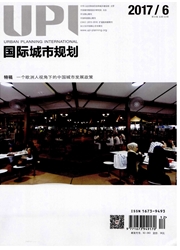

 中文摘要:
中文摘要:
健康城市的规划与设计日益获得关注,一方面城市环境问题突显,特别是发展中国家因工业化造成的空气污染等;另一方面城市居民对身心健康的诉求,需要物质空间支撑生活品质的提升。本文通过理论和实证的文献研究,明确健康城市规划中重要的空间要素,分析不同路径下各类空间要素与健康的相关性。基于减少污染及其对人体的影响和促进锻炼两种路径,从土地使用、空间形态、道路交通、绿地及开放空间四方面阐述各规划要素与公共健康的关联,以期为健康城市规划和相关研究提供依据。
 英文摘要:
英文摘要:
Planning and design for healthy city has drawn increasingly extensive attention. On the one hand, urban environmental issues have become prominent, especially air pollution caused by industrialization in developing countries; on the other hand, urban residents' demand for physical and mental health calls for physical space to promote the quality of life. Based on theoretical and empirical researches, this paper explores significant spatial factors in healthy city planning and their correlation with public health in different approaches. In order to reduce pollution and its impact on human as well as encourage exercise, the correlations are elaborated from four perspectives: land use, spatial form, road and transport, green space and open space, with a view to provide basis for healthy city planning and its related studies.
 同期刊论文项目
同期刊论文项目
 同项目期刊论文
同项目期刊论文
 期刊信息
期刊信息
